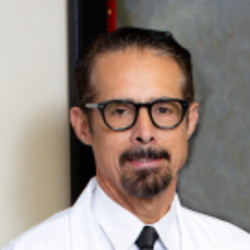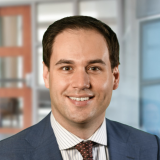I will never forget meeting one of my first patients in private practice. As I entered the treatment room, I saw an elderly gentleman, his eyes downcast. He looked so sad. As I consulted his chart, I saw a note that his wife had died only a month earlier, and I could then understand his demeanor.
As a pain management physician, I performed my due diligence by completing a careful physical examination and ordering MRIs and X-rays. The imaging studies revealed moderate to severe spinal stenosis, which is not unusual for a patient his age. I tried two rounds of epidural treatments in combination with physical therapy. When he reported no relief from his intense back pain and neurogenic claudication, I sent him to a spine surgeon for evaluation.
The surgeon returned him to me, and his comment surprised me. He said, “I’m not touching him. Something isn’t right.”
The surgeon’s assessment seemed to confirm my suspicions. This man’s pain was psychosomatic. Surgical intervention was not indicated.
The next time I saw him, I prescribed him an antidepressant. This was not unusual. Antidepressants can dampen pain transmission, and it would be standard for a man whose life partner had recently died to be depressed.
A month later, my patient’s son came into my office and told me that his father had passed away.
“My dad had pancreatic cancer,” the son told me, with tears in his eyes. “How could you not catch that?”
I stood frozen, rooted to the spot. My mind was racing through the symptoms and analyses that had been done over the time I had treated his father.
On one level, the answer to his question was straightforward: Pancreatic cancer often does not show up on imaging and is often not diagnosed until the patient is near death. Further, it is not a common cause of back pain in older people with decades of joint wear and tear. Ironically, even if I had detected it, he was likely already past the point where treatment would have meaningfully extended his life.
Still, I had jumped to conclusions. I had assumed, upon seeing the patient, a grieving older man, that his pain was psychosomatic. Like the surgeon, I sensed that something wasn’t right.
Based on his life situation, I had assumed that this meant that his pain was related to his depression.
Patients are often misdiagnosed due to incorrect judgments by medical staff. For instance, a patient whom a nurse describes as ‘rude’ or ‘having a bad attitude’ may, upon speaking with him, turn out to be on edge because he has severe claustrophobia and a fear of medical environments.
Similarly, another example may be the amputee who is described as ‘combative’ and ‘noncompliant’ in his treatment notes because he is in excruciating pain due to inadequate pain control for his phantom pain syndrome. These are just a few examples of how negative judgments can lead to misdiagnoses and inadequate care.
Many studies have shown that patients receive different care based on characteristics such as age, race, gender, weight, socioeconomic status, and level of education. We must do everything we can to eliminate these biases, which threaten the lives of patients who are often already vulnerable due to the same factors we use to judge them.
The first step to an accurate diagnosis is trusting the patient and what they tell us. We must assume that the patient is honest and well-intentioned when discussing their symptoms until proven otherwise. This trust is the cornerstone of our practice, ensuring that our patients provide an honest and complete history of their symptoms and activities if they feel that their words will not be ignored or dismissed or will result in them being judged negatively.
Understanding the patient’s unique situation is essential to providing comprehensive care. Only mindful, nonjudgmental care allows tailored treatment plans that consider each patient’s needs, challenges, preferences, and values.
To succeed, medicine must be a collaborative doctor-patient effort. Patients who feel the doctor hasn’t listened to and understood their concerns are less likely to adhere to the treatment plan. Even worse, care plans based on incorrect or partial diagnoses may make things worse and are unlikely to be caught and corrected if patients do not feel free to speak or are not listened to when the care plan fails to improve their symptoms. A high rate of successful treatment occurs when patients are listened to, taken seriously, and valued as individuals.
An interesting finding from the field of sales education is that the single most significant difference between a person choosing versus not choosing to buy a product is how listened to and understood they feel by the sales professional. People are more likely to believe that a solution will help them if they feel that the person recommending it genuinely understands their situation and has recommended the correct solution for their needs.
In health care, the same principle applies to diagnoses and treatments. We must listen to them with extreme care and openness to create a treatment plan that best suits the patient. We likely cannot “sell” patients on adherence to a health plan if they do not feel heard, taken seriously, and understood.
Patients are more likely to be proactive when encouraged to record and report symptoms. They are less likely to act on their health if doctors interrupt, talk over them, or appear condescending.
Judgmental attitudes from doctors can contribute to feelings of shame or guilt in patients, which can negatively impact their mental and emotional healing. An environment that provides support contributes to improved overall well-being. This is not just a matter of patient comfort but directly affects their health outcomes. Biochemical evidence from research into stress hormones shows that patients must feel safe and supported to heal.
Nonjudgmental care is not just a practice; it is the most powerful way to fight disparities in health care outcomes and improve patient outcomes.
I would even propose that the medical profession introduce “listening training” and educate doctors about known systemic disparities in health care outcomes.
Perhaps doctors and medical students could benefit from setting designated times to practice listening to each other as patients — while wondering if their fellow doctors have cooked up a hard-to-spot diagnosis or a challenging noncompliance situation for them to spot and address.
However we accomplish it, we as a medical community must improve our ability to listen to patients earnestly and nonjudgmentally to improve treatment outcomes. Some patients don’t need a miracle drug but a doctor with a genuinely attentive listening ear.
How do you make sure to hear your patients' concerns? Share in the comments.
Dr. Francisco M. Torres is an interventional physiatrist specializing in diagnosing and treating patients with spine-related pain syndromes and general musculoskeletal disorders. He is certified by the American Board of Physical Medicine and Rehabilitation and the American Board of Pain Medicine. In his free time, he enjoys working out, playing the violin, and spending time with his five grandchildren. He is a 2024–2025 Doximity Op-Med Fellow.
Illustration by April Brust







